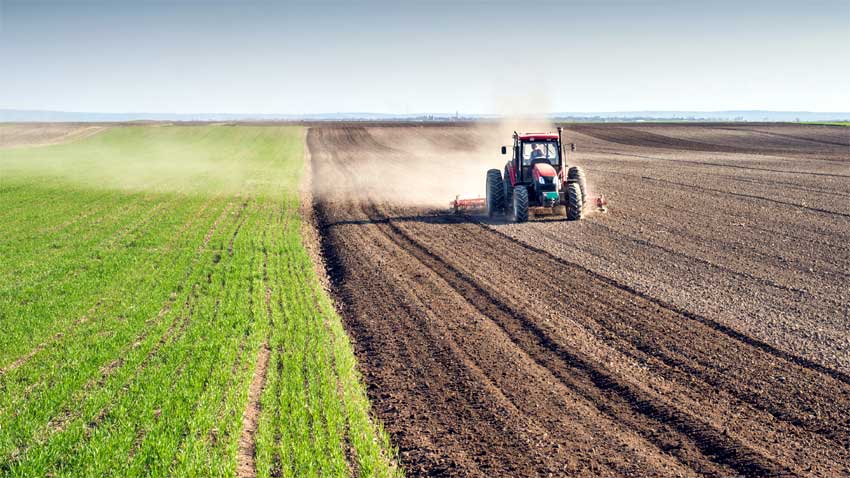April 22, 2022 (MLN): The country’s overall nutrients offtake jumped by 13.5% to 332,000 tonnes during March 2022 from 293,000 tonnes in the same month last year, the latest monthly report of fertilizer offtake issued by the National Fertilizer Development Company (NDFC) showed today.
Among the nutrients, nitrogen offtake increased by 34.5% to stand at 278,000 during March 2022. While phosphate and potash offtake went down by 37.6% and 32.4% when compared to March 2021.
The report underlined that about 843,000 tonnes of different fertilizer products were produced in Pakistan during the month of March 2022. The major share was of urea (70.7%) with 596,000 tonnes.
Other products were DAP (77,000 tonnes), Nitrophos (78,000 tonnes), CAN (72,000 tonnes), SOP (1,400 tonnes), SSP (8,700 tonnes) and various grades of NPK (10,000 tonnes). Total imported supplies were 71,000 tonnes comprising 50,000 tonnes of urea, 19,000 tonnes of DAP 200 tonnes of SOP and a small quantity of MOP i.e. 1,500 tonnes during March 2022.
During Rabi 2021-22, total nutrients offtake stood at 2,510,000 tonnes, depicting a decline of 1.9% as compared with the same time frame of last year. Out of this, nitrogen and potash offtake increased by 1.2% and 8.2%, respectively while phosphate offtake witnessed a decline of 11.7% over the corresponding period of last year.
UREA
The country’s urea sales increased by 48.3% to 509,000 tonnes in March 2022 when compared to 343,000 tonnes in the corresponding month of last year.
Cumulatively, during Rabi 2021-22 (Oct-March), urea offtake was 3,320,000 tonnes, up by 3% compared to Rabi 2020-21.
The report noted that the price of a 50 kg bag of urea (sona) in the domestic market during the said month inched down by 1.9% MoM to Rs1,936 while the price of urea (other) went up by 2.7% over February 2022.
In the international market, the price of Fob bulk China urea price was quoted at $550-900/tonne in March 2022. Fob bulk Middle East prices were reported at $600-960 per tonne. Ex-Karachi price of imported urea was in the range of Rs6,381 to Rs10,468 per 50 kg bag.
Province-wise, urea offtake increased in Punjab and Sindh by 37% and 211%, respectively. Its offtake decreased by 16% and 27% in KP and Balochistan as compared with the previous year.
The offtake during Kharif 2022 is expected to be around 3,402,000 tonnes. Total available urea would be about 3,414,000 tonnes including 3,214,000 tonnes of domestic production. Going by the report, the plan for the import of 200,000 tonnes of urea needs to be materialized immediately; otherwise, a shortage may occur during June and onward.
DAP
On the other hand, the sales of diammonium phosphate (DAP) decreased by 44.6% to 80,000 tonnes in March 2022, against 144,000 tonnes recorded in the same month last year. This decrease in DAP offtake is due to high prices of DAP in the international and accordingly in the domestic market.
The report noted that the high price of DAP has resulted in increased usage of urea and other nitrogenous fertilizers.
During Rabi 2021-22 (Oct-March), DAP offtake was 927,000 tonnes, lower by 16.4% compared to the same time frame of Rabi 2020-21.
The report stated that the price of a 50 kg bag of DAP in the domestic market during the said month edged down by 0.2% to Rs9,327 when compared to Rs9,347 reported in February 2022.
In the international market, DAP prices in China ranged between $870-1050/tonne fob bulk. The price of imported DAP ranged from Rs8,851 to Rs12,301 per 50 kg bag during March 2022.
Province-wise, DAP offtake during the review month declined by 48%, 36%, 47% and 53% in Punjab, Sindh, KP and Balochistan, respectively as compared to March 2021.
As per the report, Kharif 2022 started with an opening stock of 276,000 tonnes of DAP. The total availability will be around 776,000 tonnes that including 420,000 tonnes of domestic production and 80,000 tonnes of import. The supply-demand gap will be filled by imports through the private sector.
Copyright Mettis Link News
32303







